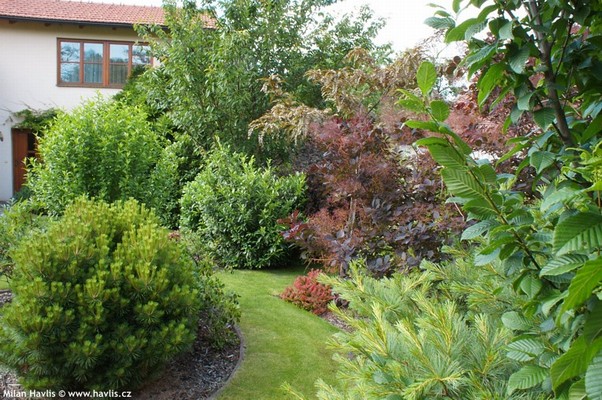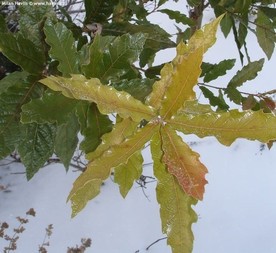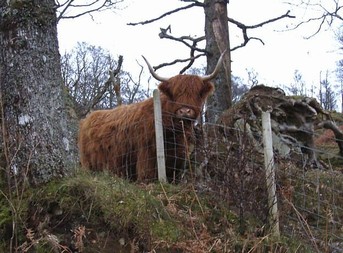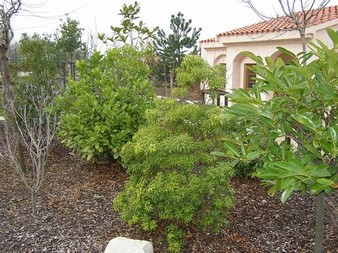MIMOSA WILT DISEASE
Did you get a silk tree (albizia julibrissin) and now you feel that something is not completely right? Leaves are turning yellow in the middle of summer and drying out, and the trunks are developing yellow, orange or brown coloured spots which definitely does not look right. Correct. You have encountered one of the most dangerous fungi diseases called mimosa vascular wilt.
The legend of the blue feather
A fairy tale about the pride of a colourful bird who wanted to fly from a distant land in search of colourful holly berries.
A healthy and beautiful garden with mycorrhiza
Our ancestors knew that if they wanted a rich harvest, they had to loosen the soil regularly and add organic matter to the soil in the form of composted garden or kitchen scraps. At that time, the soil was not polluted with chemical fertilisers, pesticides and other harmful substances and soil protection was only done with the help of available resources from nature. Soil life was rich in micro-organisms and provided a healthy environment for growing a variety of crops. Today, this is not the case. In our cultivated gardens, soil life is almost non-existent. For every 'problem' there is a manufactured product and we are systematically destroying what has been there since the beginning of time.
Winter tests of new plants
I enjoy gardens. I enjoy plants. I enjoy trying new species and varieties. It's like a passion that can only be stopped by nature itself making it clear that it doesn't want this or that plant to take hold. But when it does, it's a wonderful feeling that another beauty has been added to the realm of those that can enhance our landscape.
Girl's Stone
Sunday + nice weather = trip. This equation has its validity if you add a good mood and a desire to go somewhere. This time we will take you to a favourite place of South Bohemian tourists - the ruins of Dívčí kámen, which is called here nothing else than "Dívčák".
SCOTLAND - the land of hills, lakes and rhododendrons
Scotland is much more often the destination of backpackers and tenters than any other part of the British Isles. It's not surprising either, because unlike much of England, which can be said to be flat, the terrain in Scotland is beginning to increase radically. Uplands are turning into mountains and as you drive through the increasingly winding roads, you feel much like you're in the Alpine foothills of Austria or Italy. Only the population density is noticeably thinner. At the first sight of the hills, you'll either fall in love with the landscape or... or you won't. Apparently there is no in-between. This decision is often a very quick one, helped along by herds of peacefully grazing sheep who don't give a damn about you, but as soon as you get closer, they start to raise their heads and now and then some will greet you. But the initiated know that it's more of a "do you have anything good to eat?" kind of thing. But the sheep didn't want to be photographed, unlike these beauties :-)
A PLACE OF HONOUR FOR A GIRL - article from the magazine House and Garden
This article is not written by us - the gardeners - but by Radek Beneš, editor of the magazine Dům a zahrada, who visited us in the summer of 2007 and was so impressed by our garden that he wrote an article about it and took dozens of photographs for the November issue of the magazine (pages 139-146). With their permission, we are publishing it here unchanged.
SUMMER MAGNOLIA - queens among the trees
I like to say that if you want a tree that you will envy yourself, get a large-flowered magnolia. Why? Because it's gorgeous! In the early 1990s, I visited Windsor Castle in England. It was towards the end of summer, and there were huge green leaves glistening on the high stone walls of the fortifications, and among them were what I dared not even call flowers at the time. They were not comparable to anything that blooms here. Huge, pure white and, as I later discovered, wonderfully fragrant. The grandeur of the royal mansion, together with the monumentality of the long and high walls, demanded a well-chosen accessory, and the wise gardener chose it well. At the foot of the walls he planted these beautiful trees, which he then carved so that they pressed against the walls, forming a sort of cover of irregular branching and showy foliage that would not fall off for the winter. The overall effect was to make the plant look as if it was climbing the walls, and this was achieved. His masterpiece was then crowned with a profusion of white flowers year after year in summer.
How the idea of focusing on evergreen broadleaves came about
It has been many years since I first visited the UK during the "growing season". I deliberately put that term in quotation marks because when I saw the beautiful and vibrant groups of shrubs and trees with their rich green glossy leaves of many shapes and shades, I couldn't believe it was February. Naturally, English winters are warm for our people (the temperature rarely drops below -6°C and when it does, it almost never stays below freezing through midday). But even in severe frosts, these plants have been able to adapt. I walked around each shrub and tree for perhaps hours wondering what helps them survive the cold and frost. And since it would be useless to envy the English their climate and thus a more diverse flora, I gradually began to experiment with some species in Bohemia. I noticed that one species - Prunus laurocerasus bay laurel - unspecified cultivars, apparently "Caucasica" and "Otto Luyken" - already occurs in some of our parks in fairly large specimens, so I got the courage to start experimenting with others.

































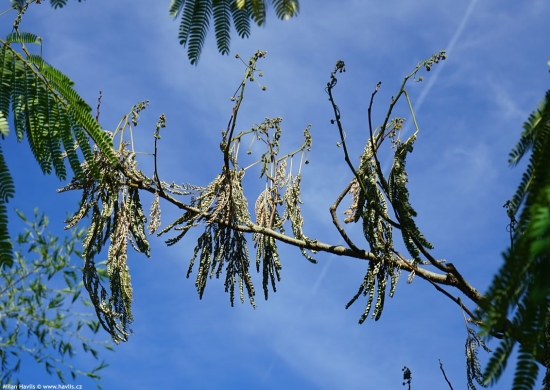
.jpg)
